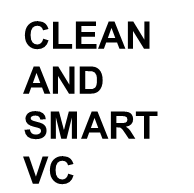Creating the clean and smart world
- By ssyc1
- December 11, 2015
- No Comments

2 powerful underlying themes: clean and smart
The year 2015 in the venture capital business may be remembered by the word “unicorn”. Apparently there are now over 130 of these. What is less noticed is that there are 2 strong themes that underpin many of the unicorns today including Uber, Palantir, Dropbox: the interest to deploy resources more efficiently and optimally on the one hand, and the rapid spread of the internet of things that in turn spur more advanced analytics. We call these 2 themes the “clean” and the “smart”.
We see the convergence of these 2 themes to be a powerful engine driving entrepreneurial, corporate and investment interests over the next 10 years. The massive improvement in computing processing power, the move to distributed computing, and the ease of parallel computing have enabled the rise of “things” that run software and can optimize in real-time. When connected to other “things”, these can optimize a system in real-time. An example of these “things” is the smart phone that is a computer more powerful than a desktop of 10 years ago and is in the hands of over 3 billion people around the world today.
New “networks” are being created – this has been called the internet of things” or IoT, the “internet of everything” and so on – and many more of these digital new networks will be created.
The new reality: software making hardware smart but software needs good hardware architecture too
In the home, there are also over 300 million smart meters in households today globally, and over 200 million smart thermostats. Our homes are being connected via digitized and “intelligent” things. In manufacturing, we see the adoption of technologies that optimize the yield in the “new” energy sector (e.g. asset management services in wind farms, microinverters and optimisers that increase energy harvest) as well as in the “old” energy segment (e.g. a new power switching method that reduces conversion losses). GE, for example, is putting sensors onto its aircraft engines and using the information not only to do condition-based maintenance but to better deploy planes and crew.
Home and industry are connected too: the smart meters when combined with distributed generation requires changes in the electric grid that will need to become more flexible, adaptive, and responsive. Switching efficiencies matter, and so does demand response. Hardware is being digitally-enabled.
The number of software or hardware pure-plays are falling. In China, while its number 1 e-commerce company Alibaba today already accounts for 1% of total commerce (its 2015 revenues was about US$13 billion), the company recently bought an electronics chain with physical outlets. In the US, Amazon has been one of the biggest success stories of e-commerce, but it just opened its first physical store and is behind the interest in smart “hardware” including robot technology in its distribution centers (e.g. it acquired Kiva in 2012 for US$775m), and launching its virtual assistant gadget for the home in June 2015.
A recent Harvard Business Review article by Michael Porter and James Heppelmann captures this point well:
“What makes smart, connected products fundamentally different is not the internet, but the changing nature of the ‘things’ … it is the expanded capabilities of smart, connected products and the data they generate that are ushering in a new era of competition.”
There will be implications for the architecture too: the real-time constraint will mean some of the processing will be done locally. The concept used by chip design company par excellence ARM Technologies is that of an “intelligent flexible cloud” where the processing is happening all the way along the network.
The concept of an intelligent, flexible, and resilient grid that responds and provides controls in real-time is yet another example of this. This means many components along the “network” will become digital, smarter, reflexive.
The beautiful convergence: resource efficiency and energy efficiency as large, meaningful problems that aren’t going away
While we do not know whether the IoT blanket that British Airways passed out on Business Class will have longevity, or that the IoT-enabled toothbrush will become popular, the beautiful problem is the resource efficiency problem. There are idle and idled resources in many industry value chains, or less-than-optimal deployment of resources, as much as there are wasteful processes, unsustainable materials being used, or poor use of energy. These problems are real and we now have powerful tools that can be leveraged to solve them.
As put to me by a senior Huawei executive a few weeks ago, the IoT is a great opportunity for achieving sustainability and to guide our usage of scarce resources.
The CTO of ARM Technologies put it even more broadly, “productivity has become a scarce resource”. Efficiency defined in the broadest way, is both clean and smart. Our blog “Efficiency is becoming an increasingly broad theme” expands on this theme.






Leave a Reply